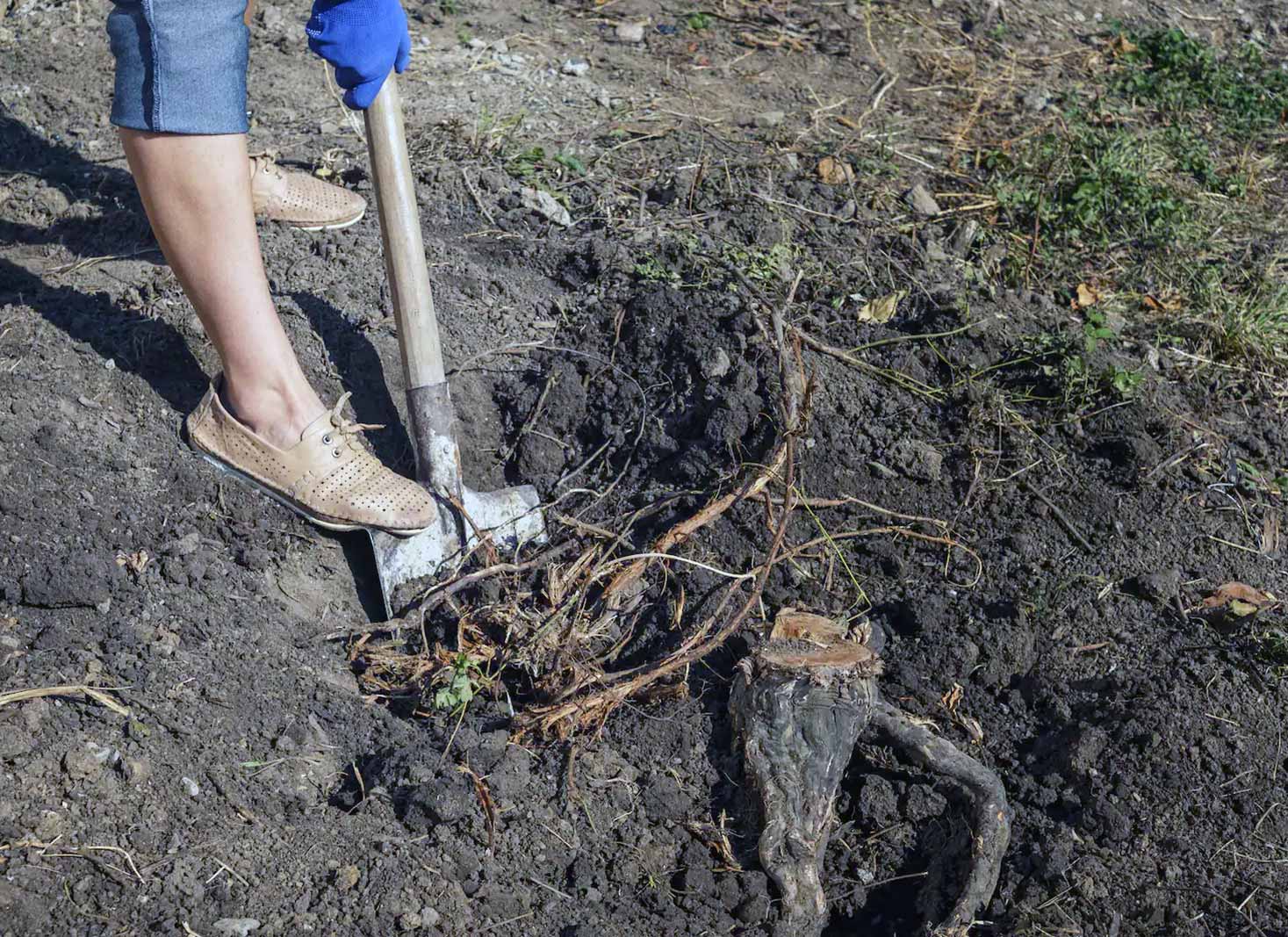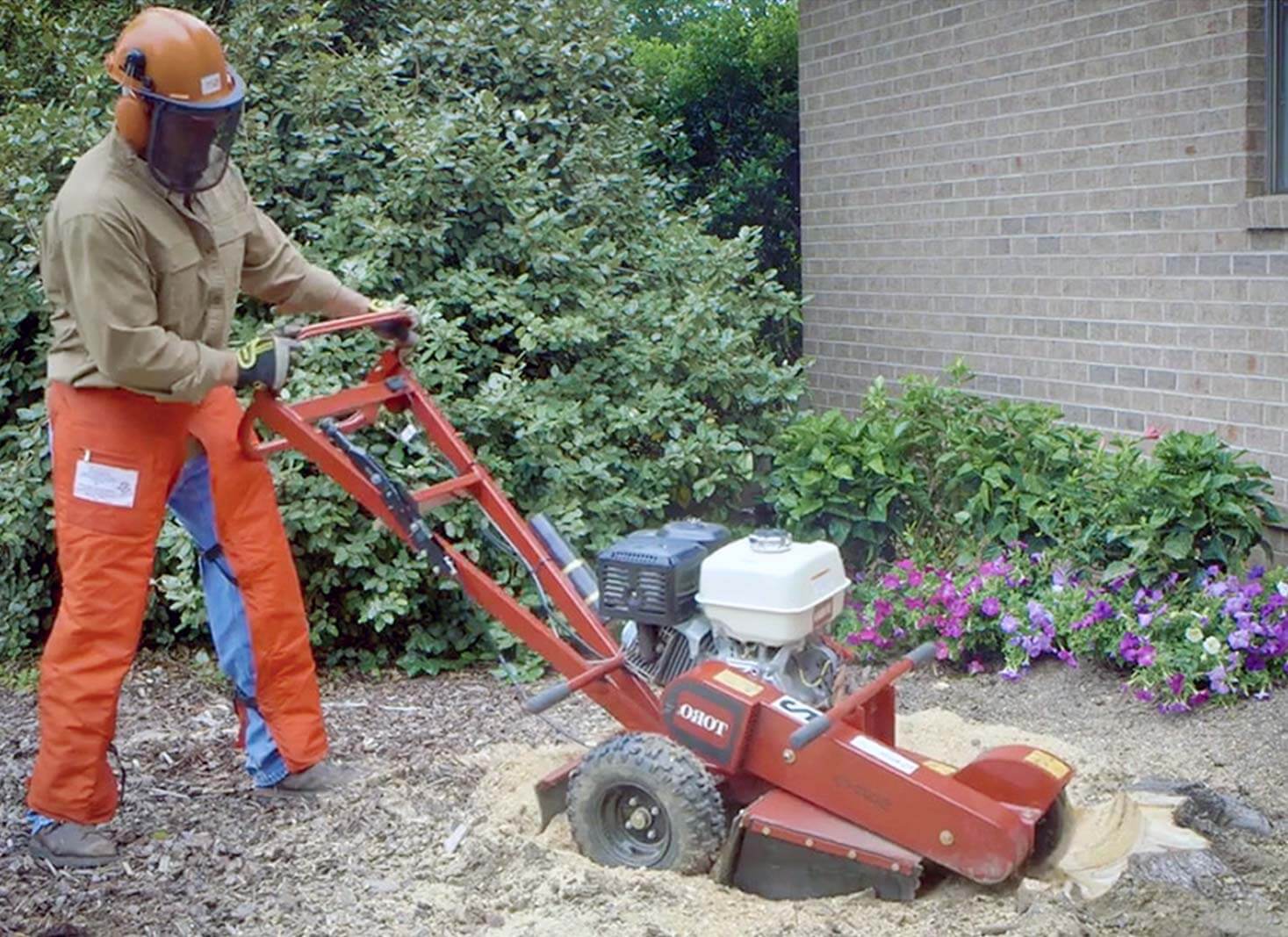Ensure that the continual and bothersome roots of trees don’t compromise the aesthetics or utility of your property.
There are a number of effective methods for killing tree roots, including manual extraction, salt treatment, chemical application, and stump grinding.
When deciding between DIY or hiring a professional for root removal, it is important to assess the situation and weigh pros/cons in terms of cost, expertise & potential risks.

What we cover
ToggleThe Importance of Killing Tree Roots
It’s important to take steps in order to shield your property from tree roots that could be destructive.
Signs of harm due to the roots must be examined, and any dead or infected trees should be removed. Pruning is necessary for those which have encroached too near buildings on a piece of land.
Tree root problems can cause much disruption – including pipelines, sewer lines, electrical wires, and gardens being ruined along with other landscaping features such as driveways.
Damage to Infrastructure
Tree roots, being invasive in nature, can cause a lot of harm to property and its surroundings.
They have the potential to damage pipelines which may lead to floods or even create cracks below house foundations, sidewalks and paved areas. Resulting in major instability issues.
They will also absorb water from soil leading to shrinkage and eventually causing building subsidence as well.
Taking timely action is important when tackling these kinds of root-related problems since ignoring them would only bring heavy costs down on you for repairing any kind of property destruction caused by tree roots.
Landscape Destruction
Tree roots can cause havoc in your landscape by entering and breaking structures, as well as depriving other plants of vital nutrients and water.
This causes soil erosion and depletion of oxygen levels, which will consequently inhibit plant growth.
To protect the aesthetics and practicality of outdoor areas, it is essential to eliminate these intrusive root systems.
Preparations Before Killing Tree Roots

It is essential to take the proper preparatory steps before embarking on a tree root removal project.
This should include removing the stump, clearing away any dirt or debris that may be in the area, and taking into consideration how it might affect nearby plants and structures for successful rooting out of trees.
Stump Removal
Tree stump removal is a fundamental part of the process and there are various approaches to it.
You should evaluate your options carefully, including manual digging, chemical treatment, burning or grinding stumps down as well as making use of home remedies such as Epsom salt1 and rock salt.
It’s important that you take safety precautions like wearing protective gear when handling trees with roots still present. Look out for any utility lines beneath the surface area surrounding the tree.
Mapping Root Systems
Careful mapping of the root system is essential before attempting extraction to avoid any possible damage to pipes or wiring.
Ground-penetrating radar (GPR) and Xradar are useful non-invasive methods that offer detailed imagery without causing disturbance beneath ground level.
On the other hand, invasive techniques such as soil removal can also be used though one should consider potential risks first before taking action in order to protect what lies around it.
Effective Methods for Killing Tree Roots
Having studied the root system, we now can investigate all of the possible techniques to destroy tree roots.
Possibilities range from digging them out by hand or utilizing salt treatments and chemical sprays, along with grinding down stumps and skilled pruning work.
Manual Extraction
Tree roots can be extracted using manual methods, such as hoes and saws. This labor-intensive process requires garden tools like spades, mattocks, shovels, and a bow saw to ensure the best results are achieved.
Safety equipment should always be worn during these operations for protection from potential harm due to labor intensity while removing tree roots manually.
It is still one of the most cost-effective ways when handling the root systems of trees in this manner.
Salt Treatment
Using rock salt to kill tree roots may be less efficient than other methods and require a longer time frame for results. To complete this process, holes must first be drilled into the trunk of the tree as well as its exposed roots.
Salt is then poured in before adding water to saturate it all thoroughly and ultimately eliminate any root growth.
This technique can effectively control a variety of trees’ activity by killing their existing vegetation below ground level.
Chemical Application
The use of glyphosate-based herbicides to terminate tree roots is a swift approach.
Yet it has risks and may need professional help for the process. When utilizing this material, precautions must be taken such as wearing safety gear like garments, gloves, and face masks for protection during application.
Additionally, one should fully comprehend its usage techniques while observing waiting periods in order to maintain safe conditions with this chemical agent.
Stump Grinding
Using a stump grinder machine is an effective way of removing large surface roots from tree stumps.
This process includes grinding the stubborn stump and its underlying root system to ground level, but it can be costly with potential risks like damaging utilities in the process.
Professional Root Pruning
When the potential for preserving tree health and eliminating small roots outside its drip line is present, a certified arborist may be called upon to professionally prune these roots.
This professional service allows them to remove those problematic root systems safely with minimal damage done around them while also keeping an eye on maintaining the overall well-being of your tree.
These experienced professionals are well-versed in properly dealing with unwanted branches or rogue root growth so as not to compromise any other part of this natural wonder.
Post-Root Removal Landscaping Tips

Once you’ve accomplished eliminating the tree roots and clearing away their remnants, it’s essential to consider landscaping for recovery of the area back to its previous form.
To achieve a stunning exterior that is also practical, keep in mind post-root removal tips like handling digging properly, disposing rocks appropriately, and planting new vegetation or trees.
Digging Safely
When undertaking root removal, it is imperative to dig with caution in order to avoid harming any residual roots or underground utilities.
To guarantee a successful landscaping experience and keep safety paramount, appropriate protective apparel should be worn when excavating, and loose soil needs to be delicately scooped away from these roots.
Rock Removal
When extracting the roots, you might have come across large rocks that should be taken out from your property.
It is necessary to use suitable tools such as shovels, picks, and mattocks when digging around these boulders. Put on some protective gear while working with them and always observe safety protocols at all times.
Afterward, those stones can either serve for landscaping purposes or get brought to a recycling center or landfill area.
Planting New Gardens/Trees

After eliminating the tree roots and ensuring any other landscaping issues have been resolved, it is now time to start replanting gardens or trees in that area.
It would be beneficial to wait around one year before planting new vegetation on the same spot from which you removed the original root system.
Allowing this period of time will assist with soil stabilization and decomposition of previous roots.
Deciding Between DIY and Hiring a Professional
When it comes to dealing with tree roots, selecting either a DIY strategy or bringing in an expert can be tough.
Considerations such as the size of the tree, root obstruction caused by house/utility infrastructure, and individual experience should all be taken into account while making this decision.
Assessing the Situation
Evaluate the size, type, and roots of your tree to understand if a DIY approach or hiring a professional is right for you. Think about how comfortable you are in such tasks.
Consider all these factors together when choosing what suits best your situation.
Take into account potential interference with home utilities as well – by doing this, it will help make sure that whatever decision you come up with is suitable for the job at hand.
Weighing Pros and Cons
Considering both the positive and negative aspects, there is a clear distinction between DIY root removal and hiring an expert. Do-it-yourselfers may see more economical results initially.
They could be exposed to dangerous risks that professionals are insured for, which can save them money in the future.
On the other hand, while it might cost more upfront to employ someone with expertise, their knowledge could mean avoiding any costly mistakes down the line.
FAQ's
In order to get rid of tree roots, a popular remedy is the use of Epsom salt.
The procedure involves drilling holes in the tree and pouring this mineral into them, then adding water for better penetration and causing fungal infections that will eventually eliminate the stump.
To make sure it works effectively, one can cover it up with a tarp or garbage bag so no more air gets to it. This method has been known as successful when attempting to kill off certain trees’ root systems.
Vinegar can be used to help eradicate tree roots. This is done by making a concoction of vinegar, salt, and baking soda to pour over the root system or by drilling into the trunk of the tree before filling it with plain vinegar in order to kill off any existing roots.
- Codey Stout, (2021) Can Epsom Salt Be Used To Remove A Tree Stump? <https://treetriage.com/stump-removal/epsom-salt-tree-stump/> Accessed: 20-03-2024.



